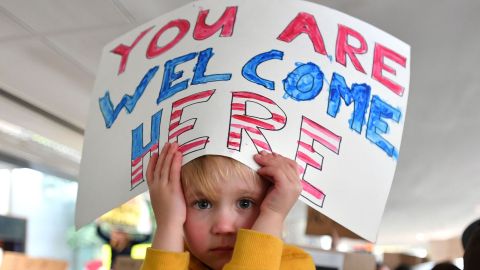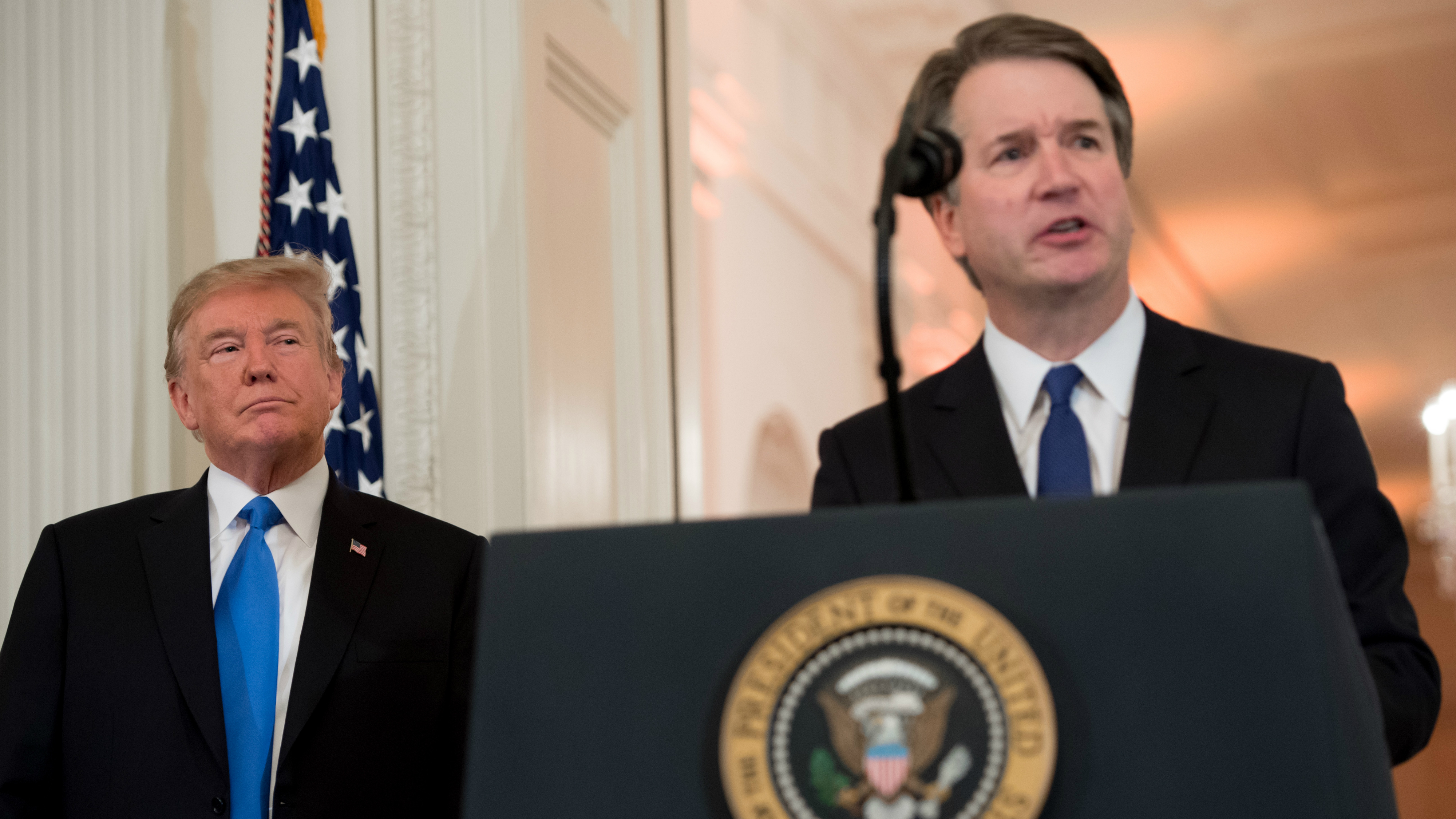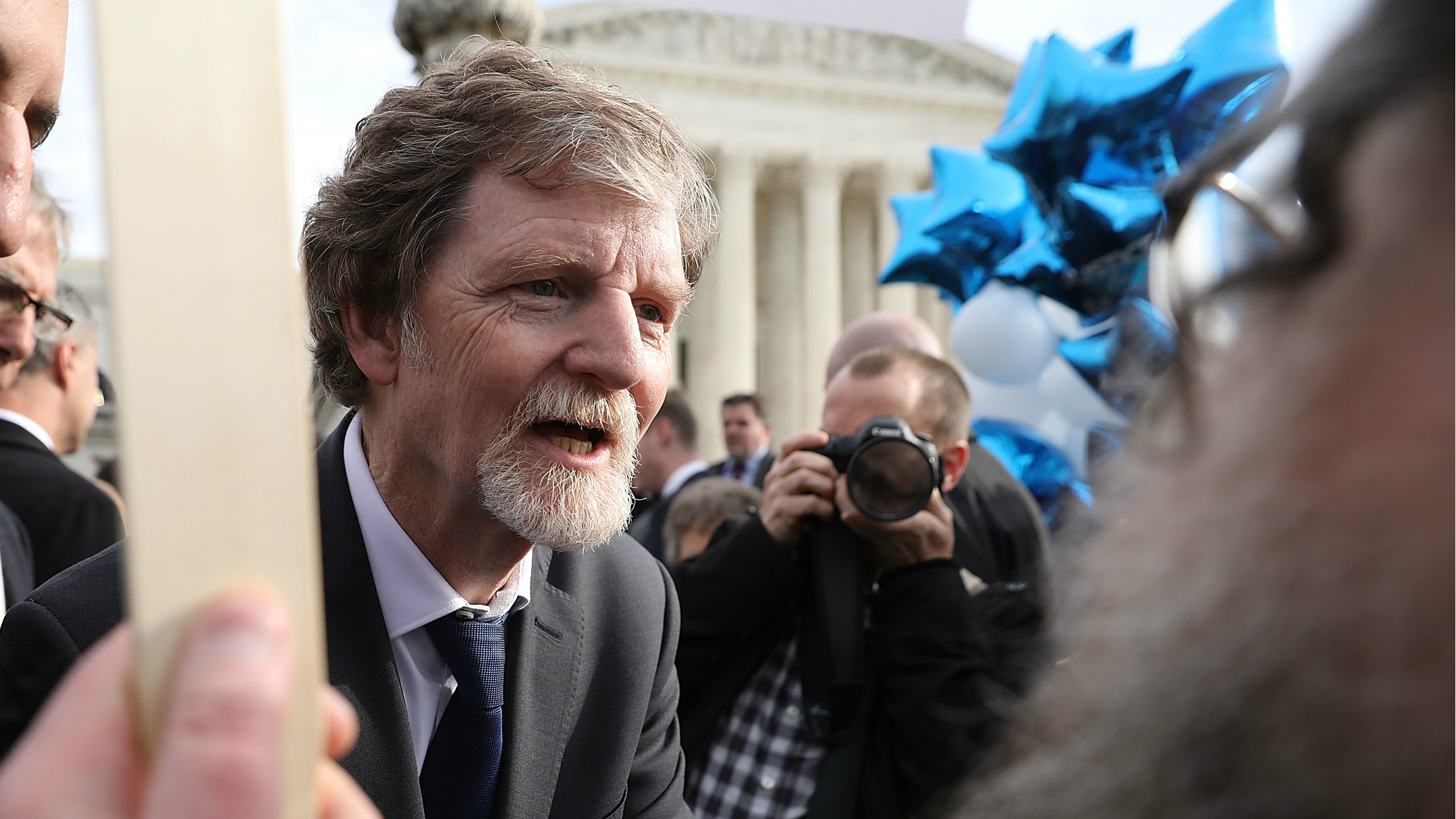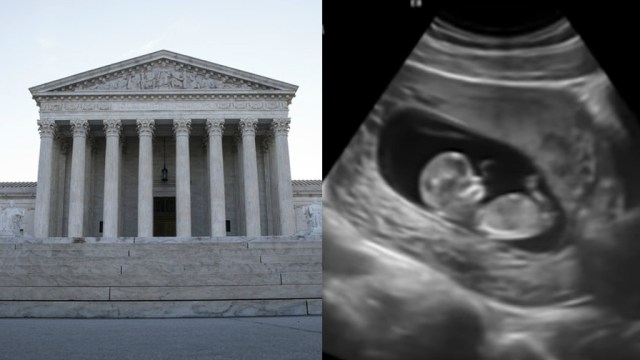Supreme Court ruling upholds Trump’s travel ban

The Trump-Pence ban on travel from select countries, mostly majority-Muslim ones, has been ruled as constitutional by the United States Supreme Court today, in Hawaii V. Trump. It was a 5-4 vote by the conservative majority.
What was the case about?
It starts with the First Amendment of the United States Constitution, the clause known as the Establishment Clause, which reads in part:
“Congress shall make no law respecting an establishment of religion, or prohibiting the free exercise thereof.”
Previous cases have established that it means one religious denomination cannot be officially preferred over another.

A view of the Supreme Court at dusk, January 31, 2017 in Washington, DC. (Photo by Drew Angerer/Getty Images)
That kind of goes to the heart of the ruling today; the plaintiffs in this case stated that President Trump’s travel ban, as first made clear in his campaign material, strongly indicates a preferred religion over another. That is, a strong anti-Muslim bias.
In fact, Trump called for a “total and complete shutdown of Muslims entering the United States until our country’s representatives can figure out what’s going on.”
As we all know, what followed almost immediately after he was elected is a ban on travel from seven predominately Muslim countries. The list has changed after the first permutation of the travel ban happened, and it now includes Yemen, Syria, Iran, Somalia, Libya, North Korea, Chad and Venezuela.
However, in classic fashion, Trump changed his words when drafting the proclamation to focus on “danger” rather than religion, claiming the ban was to prevent terrorists from entering our country.
What created the 5-4 decision today was that the plaintiffs sought to “invalidate the national security directive regulating the entry of aliens abroad.”

Front row from left, U.S. Supreme Court Associate Justice Ruth Bader Ginsburg, Associate Justice Anthony M. Kennedy, Chief Justice John G. Roberts, Associate Justice Clarence Thomas, and Associate Justice Stephen Breyer, back row from left, Associate Justice Elena Kagan, Associate Justice Samuel Alito Jr., Associate Justice Sonia Sotomayor, and Associate Justice Neil Gorsuch (Photo by Alex Wong/Getty Images)
In other words, plaintiffs claimed that the ban violates the free expression of religion, and that the national security component of the ban was a facade.
But the Supremes disagreed. “National security” instead of “ban all Muslims” as a basis for the proclamation worked, at least in this case.
A statement from the Human Rights Campaign was issued in response. It reads “Make no mistake: this is an unnecessary and dangerous ban against Muslims that recklessly puts lives in danger and undermines civil liberties in this country,” said HRC Legal Director Sarah Warbelow. “We are disappointed that the Supreme Court has chosen to uphold what is clearly a xenophobic effort that scapegoats persons of a particular faith, threatens the safety of human beings seeking refuge, encourages violence and discrimination against Muslim Americans, and does nothing to keep all Americans safer.”
Justice Sonia Sotomayor wrote in the dissent, joined by Justices Ruth Bader Ginsburg, Stephen Breyer, and Elena Kagan (who wrote their own, separate dissent):
“The United States of America is a Nation built upon the promise of religious liberty. Our Founders honored that core promise by embedding the principle of religious neutrality in the First Amendment. The Court’s decision today fails to safeguard that fundamental principle.”
She continued, “a reasonable observer would conclude that the Proclamation was motivated by anti-Muslim animus.”
The American Civil Liberties Union weighed in as well, with a Tweet:
BREAKING: SCOTUS has upheld Trump’s Muslim ban. This is not the first time the Court has been wrong, or has allowed official racism and xenophobia to continue rather than standing up to it.
History has its eyes on us — and will judge today’s decision harshly. #NoMuslimBanEver— ACLU (@ACLU) June 26, 2018
However, there is at least another week left in the docket of the Supreme Court, so there could be further rulings about this. Stay tuned!





